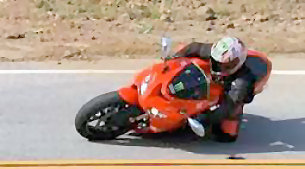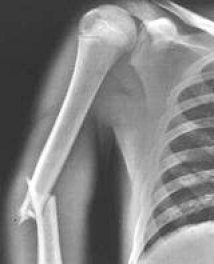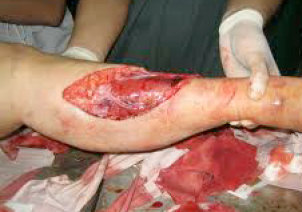Anatomy of a Motorcycle Accident / Crash
Articles from Heli Bikes (many thanks to Alf;-) – www.helibikes.co.uk
The HELI BIKES website contains information relating to motorcycle and rider safety. Much of the site content is permanent but some pages: such as ‘Articles’, ‘Safety’, ‘Bulletins’ have regular additions and updates. HELI BIKES uses various media formats to promote safety material and disseminate information which is accessible via the media links on the site e.g. HELIBIKESTV.
Follow this link to see many more articles from Heli Bikes and to download their accident survey and/or Rider’s Tales Motorcycle Accident Account forms: www.helibikes.co.uk/articles.html
There are many advisory articles regarding riding techniques and hazard awareness. Their aim is to provide riders with information on safer riding practices in order to promote sound decision making when riding on the public roads. Each article in PDF format and is freely available to download or print. RIDE AWARE!/RIDE SAFE!
Anatomy Of A Motorcycle Accident! Index:
Part 1: Motorcycle in Single Vehicle Accident: No Other Vehicles Involved & No Solid Objects Collided With!
Part 2: Motorcycle vs Other Vehicle: Vehicle pulls out of a junction into the path of a motorcycle.
Part 3: Motorcycle Accident On a Bend: No Other Vehicles Involved!
Part 4: Motorcycle Accidents: Skin Abrasion/Road Rash & Protection
Anatomy Of A Motorcycle Accident! Part 1
Motorcycle in Single Vehicle Accident: No Other Vehicles Involved & No Solid Objects Collided With!
Many motorcycle accidents occur when the rider has lost control of the motorcycle due to any number of different factors. These may be a result of road and weather conditions (most notably in wet or ice conditions), excessive speed, excessive speed on a bend, avoiding other vehicles, animals or objects in the road, under harsh braking (snatch braking), mechanical failure etc.
If the accident occurs on a relatively straight road or bend where no object is collided with, then two scenarios may enfold which will lead to different types of injuries. These two scenarios, or rather how the rider falls off the bike are more commonly known as: HIGH SIDE or LOW SIDE. The key components in both situations is speed at the time of the accident. The greater the speed, the greater probability of sustaining more severe injuries.

In a LOW SIDE crash, the angle at which contact is made with the road is less, which leads to a more common ‘sliding’ on the road surface. If appropriate protective clothing is worn, i.e. boots,gloves, armoured trousers, armoured jacket and helmet and the rider does not roll at high speed and no contact is made with a solid object…
…then there is much less likelihood to sustain impact injuries, i.e. broken bones, internal organ injuries etc. In this situation, if the appropriate protective clothing is not worn, then there is much more likelihood to sustain abrasive injuries to the body and injuries to hands, feet and ankles. With suitable protective clothing, the risk of abrasive injuries will be reduced, and afterwards it will be wise to replace severely worn or damaged protective equipment.
In a HIGH SIDE crash, the angle at which contact is made with the road is greater, which leads to a more common ‘rolling’ on the road surface. As the angle is higher there is more likelihood to sustain impact injuries i.e. broken bones to any of the limbs, spinal & neck injuries and internal organ damage. Again the key component here is the speed of impact or rate of deceleration.

If protective clothing is not worn, then it is highly probable that serious injuries will be sustained. As well as armoured clothing, another beneficial addition will be the wearing of a back protector (to protect the spine somewhat) and hip protectors or padding (which will protect the pelvis somewhat) from side impact injuries whilst rolling.
Anatomy Of A Motorcycle Accident! Part 2
Motorcycle vs Other Vehicle: Vehicle pulls out of a junction into the path of a motorcycle.
As with all accidents, the speed at the time of impact and the resulting speed of deceleration of the body will determine the extent and seriousness of injuries. As a direct comparison:

If a rider crashes into a wall at 60mph, then the deceleration is almost instantaneous, hence all the energy in the force of the impact is absorbed by the body and the injuries will be very serious. If a rider crashes with a car and the rider is
propelled over the car bonnet and continues to slide along the road surface, then the speed of deceleration of the body will be more gradual, thus the rider will incur less severe injuries. However this does not mean that the injuries will minor, it merely means less intense. Because the rate of deceleration is gradual, the energy in the force of impact will be considerably less, making this a more survivable scenario.
Let us consider the impact with a car.
The angle at which the motorcycle collides with the car will effect the energy absorption of the impact. If the collision point of the car is at deg and is solid(e.g. A Wheel or Structural Beam) then the energy will be transferred to the motorcycle. If the collision point of the car is at e.g. 45deg and is with a part of the car that will ‘crumple’, then less energy will be transferred.
If the motorcycle collides with the side of the car at 90deg, i.e. with the front wheel first, then structural damage will occur to the front of the motorcycle, with at least fork and wheel deformations, and this will act to absorb energy.
In this scenario, at the point of impact, the rider is propelled forward (loosely pivoting on the handlebar grips).

If the rider is allowed to be propelled forward without contact with the vehicle, then the body will receive less of an impact and the deceleration will be gradual. At the point of impact, a common injury is a fractured pelvis due to the forward motion forcing the pelvis into the petrol tank.
Another common set of injuries at this stage would be fractures to the hands, wrists, arms and shoulders as well as ligament and tendon damage as the impact energy is transferred from the car to the motorcycle to the rider. The next set of circumstances will really determine the survivability of the rider.
If the speed is high and the angle of impact results in the rider colliding with the side of the car, then a similar result will occur as that of hitting a wall. All the energy of the impact will be absorbed by the rider. Bone fractures will be common in any of the limbs and spinal, neck injuries may also occur, compounded by internal organ damage. These injuries may be so severe that they may prove fatal. I must re-emphasize here, that the higher the speed of impact and the more square on the angle of impact will make serious injuries highly probable, but not absolute.

In this very intense collision, protective clothing has limited benefit as it will only protect in reduced impact forces.
Another common injury associated with this type of accident is a fracture of the Femur (Thigh Bone). If either leg contacts the vehicle on impact or as the rider is propelled over the vehicle then the still relatively high impact speeds will cause this large strong bone to incur a severe fracture. If the rider makes limited contact with the vehicle or is propelled ‘cleanly’ above, then the next set of circumstances will determine the types of injury.

This is very similar to a HIGH SIDE type of accident. As the rider is propelled high above the ground, then the resultant angle of impact with the ground will be greater. This secondary collision may also cause very severe injuries. Limbs are particularly prone to fractures, however the probability will make them less severe as the rider is reducing speed all the time. Depending, also how the rider makes contact with the ground, and what kind of surface it is will also be a factor. If it is a hard road, there will be a greater impact force, conversely grass or soft mud will produce a lower impact force. Another common injury on impact here is the pelvic injury and spinal injury…
..hence why it is always advisable to wear a back protector.
If on impact, the rider then slides or rolls along the ‘road’, then the next set of circumstances will determine whether there will be further injuries. Abrasive injuries and joint dislocations may also occur at this stage. If when sliding etc and then further contact is made with a solid object, e.g. a raised curb stone or lamp post or another vehicle, then the injury domino effect continues on, however we would expect the injuries to be less severe as the speed of impact will be reducing within the accident timeline. Again we would strongly recommend armoured protective clothing, that may provide a good level of life threatening protection during this third phase of the accident.
Whilst working on Air Ambulances all over the UK, these types of accidents and injuries are common. Whilst statistics show motorcycles as being a small percentage of all road traffic, the accidents involving motorcycles do result in disproportionately high injury rates, for some of reasons explained above. Whilst protective clothing will provide adequate protection at lower speeds and with lower impact forces, unfortunately there is little protection for higher impact forces.

The best protection is obviously accident avoidance, which may seem very easy to say. However of the many motorcycle accidents I have dealt with, in the majority of cases, they could have been avoided and the injuries could have been less severe. By wearing appropriate clothing for the type of riding and by riding with appropriate speed and increased awareness of road conditions and traffic ???ow, the avoidance could have been achieved.
The information detailed on this site is not intended to dissuade anyone from riding a motorcycle, far from it! It is intended to show cause and effect! It is intended to promote safer riding and driving practices in order to prevent motorcycle accidents and injuries. RIDE AWARE!/RIDE SAFE!
Anatomy Of A Motorcycle Accident! Part 3
Motorcycle Accident On a Bend: No Other Vehicles Involved!
A common accident that we attend is one whereby a rider has lost control on a bend and has then subsequently collided with an immovable object. We often see as a result of poor positioning and excessive speed whereby the rider ‘runs wide’ into the opposite lane, losing control and either a lowside or highside scenario enfolding. We also often see the cause of harsh braking in the bend leading to destabilizing and loss of control. As mentioned in the above scenarios, it really depends on how the rider ‘dismounts’ the motorcycle and what type of subsequent impact is made, will determine the type of injuries that will be sustained.
It may seem surprising, but very many of these types of accidents, if not most, are not influenced by poor weather or road conditions, in fact most occur in dry conditions or in conditions that are perfectly rideable but the rider has used inappropriate techniques which has led to the accident. In many cases where no subsequent impact is made, a rider may suffer no more than a bruised ego (usually when that rider has been wearing suitable protective clothing) In a common case of a lowside slide on a bend the ‘low side leg & arm’, i.e. that leg/arm that contacts the surface first if protected may have bruises and other minor injuries, however without protection may have very serious injuries to skin, muscle, bone etc.
In general terms these are recoverable however other life altering injuries may be to injuries to knees, shoulders, ankles, arms etc. In many ways if the injuries sustained are broken bones, then these are generally considered recoverable with a good success rate. However if the injuries involve damage to tendons, ligaments & nerves then these may not have the same recovery rate and may lead to permanent life changing injuries. These may result in partial or total paralysis of limb function. A very common injury of this type involving nerve damage may be as a result of a hard impact to the shoulder.

If on a highside accident, the rider is propelled high into the air and then lands hard onto the shoulder, or on a lowside accident, the rider slides along the road and impacts a solid object such as a lamp post then injury to the ‘Brachial Plexus’ may be sustained.

In essence, the hard impact to the shoulder, may cause an over extension of the nerves in the shoulder. These nerves attach at the ‘root’ in the neck and then spread along the shoulder to the arm. If the break in the nerve is at the root, then this will lead to permanent paralysis of arm function.
If the break in the nerve is along the nerve at some point, then with surgery, the nerve may be ‘rejoined’.
After many months of therapy there may be some recovery in limb function as the neuro pathways are ‘relearned’, however there is no guarantee of this.

Unfortunately there is no real defence against this kind of injury from hard impact accidents. Protective clothing may assist in minimising low impact, abrasive or over extension to limbs. As riders, we enjoy the sensation of riding motorcycles and in many ways accept there is greater risk and less protection whilst on a motorcycle, however that does not mean we should not be conscious of the pitfalls and consequences. By being aware of these consequences we may be able to consciously adapt our approach to riding. With greater awareness we will be able to avoid the situations that may lead us into an accident which may result in life changing injuries.
RIDE FOR YOUR LIFE!
Anatomy Of A Motorcycle Accident! Part 4
Motorcycle Accidents: Skin Abrasion/Road Rash & Protection
In most cases involving a motorcycle accident that we have attended over the years, a common injury to the rider and or pillion is cuts and abrasions to the skin. The names in themselves…cuts/abrasions…would sometimes give the impression that these are minor injuries and by which are easily and quickly recovered from. In actuality the ‘cut’ may range from a minimal/shallow breaking of the skin to a very major/deep cut or laceration that severs muscle, tendon, blood vessels and even bones and sometimes result in what is referred to as a traumatic amputation. An ‘abrasion’ may range from a mild scuff or graze to a complete ‘ripping away’ of flesh: skin and muscle etc all the way down to the bone resulting in what is referred to as a ‘de-gloving’ injury.

There are a few images here to give an impression on the range of injuries. The intention is to educate rather than feed any morbid curiosity, however there are many images available online, I’m sure, that will fulfill that. In this article I am discussing injuries to flesh: skin & muscle etc that are associated with sliding & low angle/force impacts and collisions that allow the body to decelerate at a gradual pace. These types of flesh injuries may be associated with high impact forces also, however, in those situations, internal organ damage, arterial damage and bone fractures etc would be considered the primary injuries and would be considered more critical at the time. The emergency services consistently see these kinds of injuries related to motorcycle accidents and the reality is that when suitable protective clothing is worn, the extent of the injury is diminished.
Again, speed at impact and the type of surface will have an affect on the severity of injury.
Quite often there are virtually identical mechanisms of injury, however one patient will have zero or minimal skin damage, and the other will have severe skin damage. The difference between the two is the type & quality of protective clothing that has been worn.

Modern motorcycle clothing comes in many designs and varying levels of protection. The types of materials used also vary from thick leather with padded resistance to padded textile or abrasion resistant material There are now items made of composite material that offer wider ranging protection. Motorcycle protection should be considered as to encapsulate the body. Helmet, Jacket, Trousers, Boots & Gloves, whilst not forgetting padded protection or armour that can be additionally worn.
There are also different types of suitable clothing according to the type of journey and weather conditions that might be encountered, so there are many options in the market place to afford a rider adequate ‘abrasion resistance’. Of course we would always say wear good quality motorcycle protection at all times, however the reality is
that many riders still tend to wear the bare minimum to be legal (That being a helmet!) and no protection, especially when the weather is hot.
Whilst riding a motorcycle semi-naked or in shorts and T-shirt may seem like a good idea, the potential for serious injury if involved in an accident would certainly contradict this. Although sometimes it may seem that wearing everyday clothes (jeans, shirts, fashion jackets, of???ce wear etc) may offer some protection and will save the rider carrying their ‘normal clothes’ with them, in actuality normal clothes offer zero or very little protection.

As a quick guide; choose clothing and protection according to the type of journey and the probable speed that you will be doing. At least for short/low speed journeys always wear a helmet and wear an appropriate padded jacket. As your speed and length
of journey is likely to increase, as should your level and type of protection. We advise all riders to visit a motorcycle clothing accessory store and view and discuss the varying options available throughout the range of riding conditions.
ATGATT…
…All The Gear All The Time 😉
RIDE FOR YOUR LIFE!